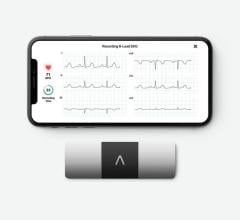May 18, 2007 — Picture paramedics mobilizing a team of cardiologists and nurses within minutes of arriving at the home of a person who is having a heart attack, simply by pressing a button that sends an electrocardiogram (ECG) over a wireless network. That’s exactly what’s being done at a Newark, NJ, medical center, and it’s dramatically improving the quality of care, according to a study honored as the best abstract presented at the 30th Annual Scientific Sessions of the Society for Cardiovascular Angiography and Interventions (SCAI), May 9–12, 2007.
The wireless system, which enables on-call cardiologists to view full ECGs on “smart” phones, has cut in half the time it takes to begin the treatment of heart attack with catheter-based techniques such as angioplasty and stenting.
“We have found a way to receive electrocardiograms from home, from another hospital, from our cars—anywhere we are,” said Vivek N. Dhruva, D.O., academic chief fellow in the Division of Cardiology at the University of Medicine and Dentistry of New Jersey (UMDNJ)- New Jersey Medical School, who presented the paper. “In only four months, we went from being in the bottom 10 percent of hospitals in the time to treatment of heart attack to being in the top 10 percent of hospitals.”
The so-called door-to-balloon time — the time between arrival at the hospital and initial inflation of an angioplasty balloon to open a blocked coronary artery—has become a recognized marker of the quality of care delivered to heart attack patients. Current guidelines have set a goal of no more than 90 minutes, a deadline that many hospitals struggle to meet.
Using the wireless system, cardiologists are now notified an average of 15 minutes before the patient even arrives at the hospital. From June to December 2006, the average door-to-intervention time fell to 80 minutes. Today, it is averaging just 73 minutes.
Establishing the wireless system took 6–8 months of planning and involved staff from cardiology, the emergency department, and emergency medical services. Representatives from administration, admitting, information technology, and telecommunications played a key role as well, Dr. Klapholz said.
For more information visit www.scai.org.


 July 24, 2025
July 24, 2025 









